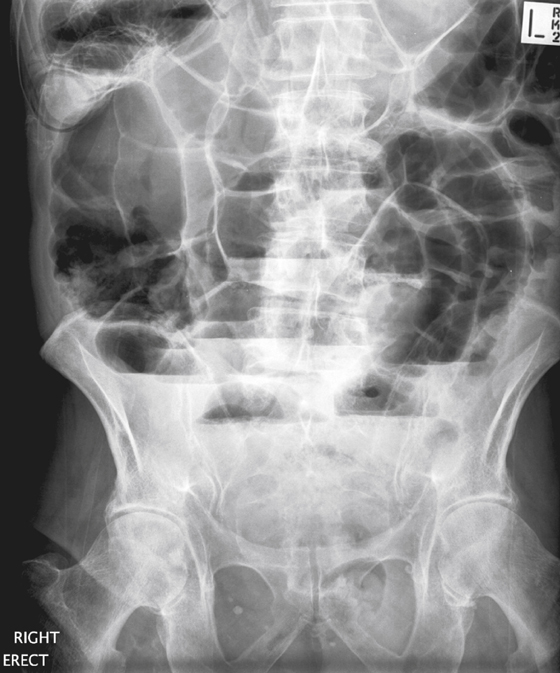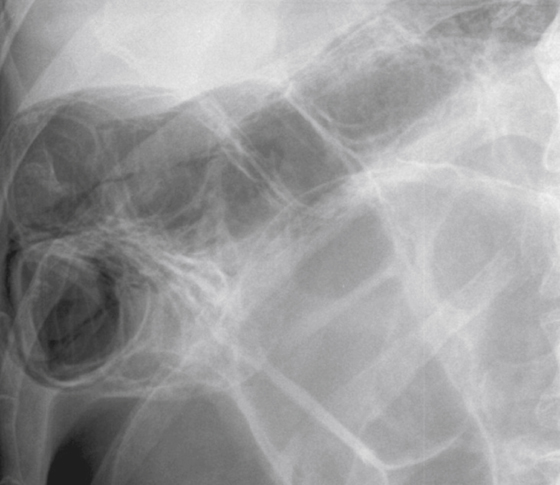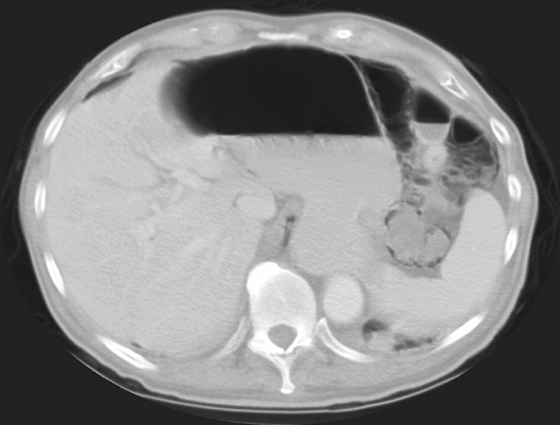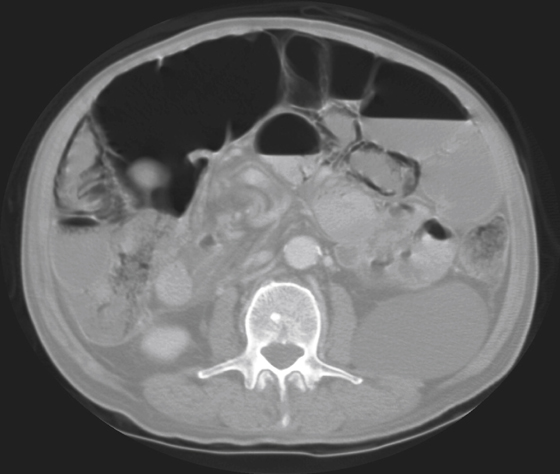



History: An 85-year-old man presents with acute abdominal pain and distention.
1. Review the provided images. Which of the following findings are present? (Choose all that apply.)
2. Which of the following is an iatrogenic cause of pneumatosis intestinalis?
3. In an older patient with abdominal pain found to have pneumatosis intestinalis, what condition must be considered first?
B. Bowel ischemia and necrosis
4. What imaging procedure should not be performed in a patient with suspected acute bowel ischemia?
ANSWERS
CASE 15
Pneumatosis Intestinalis
1. A, B, D, and E
2. C
3. B
4. B
References
Scheidler J, Stabler A, Kleber G, Neidhardt D. Computed tomography in pneumatosis intestinalis: differential diagnosis and therapeutic consequences. Abdom Imaging. 1995;20:523–528.
Cross-Reference
Gastrointestinal Imaging: THE REQUISITES, 3rd ed, p 335-338.
Comment
Pneumatosis intestinalis of the bowel describes a condition in which air collects in the layers of the wall of the bowel (see figures). The most plausible cause for this condition is a breakdown of the mucosal integrity, allowing bowel air to pass through the mucosa into the submucosa. To gain access to the bowel wall, there must be some disruption of the mucosal integrity, such as mucosal tears or ischemic or necrotic disease of the bowel.
Ischemia is a common and most serious cause. Inflammatory conditions, such as necrotizing enterocolitis, pseudomembranous colitis, Crohn’s disease, and even infectious agents also are known to produce pneumatosis. It can affect patients who take steroids. Also, obstruction, trauma, prior endoscopy, malignancies, chemotherapy, and bowel surgery are associated with the development of pneumatosis. CT is a wonderful method for demonstrating even minor amounts of pneumatosis (see figures).
The radiologic appearance may be one of multiple linear submucosal air lucencies in nature. Portal venous gas in a patient with pneumatosis often indicates the presence of bowel necrosis, which is probably the most significant associated finding. A benign form of pneumatosis, referred to as pneumatosis intestinalis cystica, is a condition in which subserosal blebs are seen in the distal bowel, usually having no clinical significance. The patients are asymptomatic and the condition has been associated with air tracking along bronchovascular pathways into the retroperitoneum, out the mesentery, and finally to the subserosal layer of the distal bowel (Macklin’s pathway).







